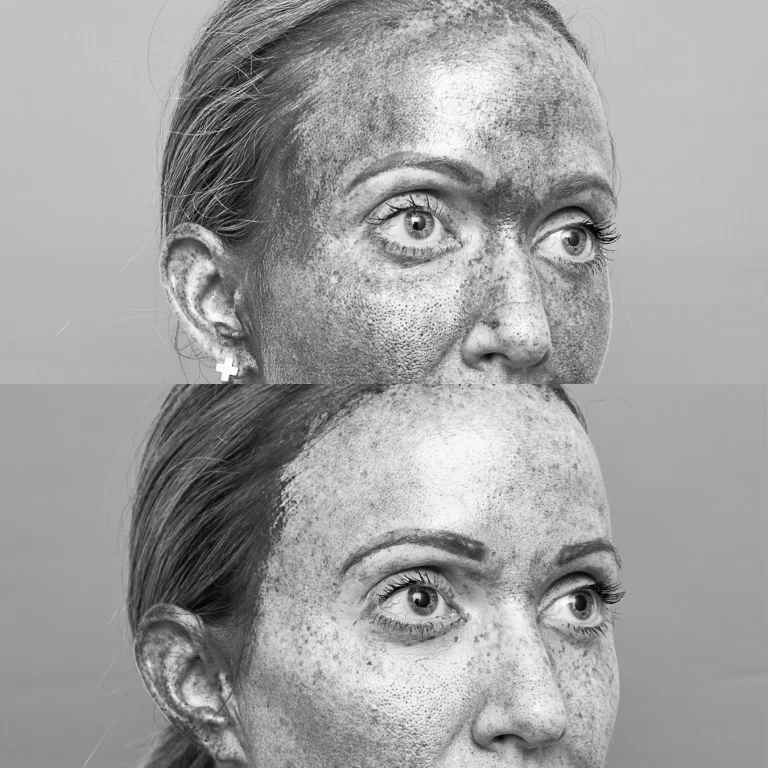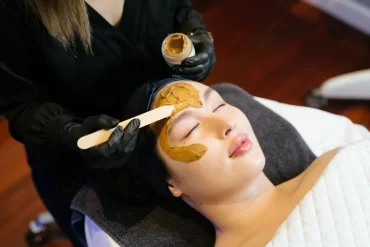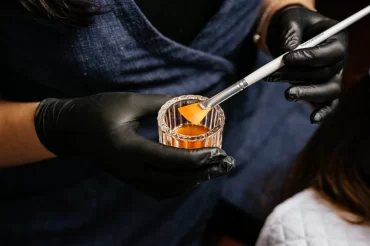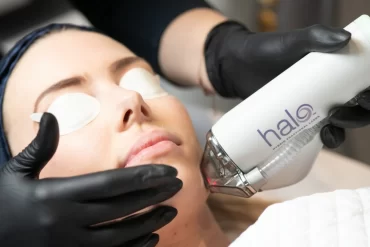Sun Damage

Photo ageing and photo damage can be described as prematurely aged skin due to chronic exposure to sunlight (extrinsic ageing).
Ultraviolet Radiation is the cause of ¾ of fine lines and wrinkles, and is either the causative or contributing factor for a majority of cosmetic skin conditions.
The effects of UV Radiation on the skin include:
- Increased melanin production
- Damage to capillaries
- Break down of proteins
- Free radical formation
- Coarse skin texture
- Loss of collagen and elastin
- Fine lines and wrinkles
- Discolouration of the skin and pigmentation
- Redness
- Pre-cancerous and cancerous lesions.
Anyone can suffer from premature ageing due to sun exposure. Those at higher risk include those who live in the tropics, at high altitude, work outdoors, engage in outdoor recreation activities and sports.
Moreover, it can also include those that have used sunbeds or solariums, have sunbaked for long periods or used tanning oils, and those who have fairer skin types (Fitzpatrick I and II). Photo ageing is preventable with use of SPF 50 daily and sun protection.
Although photo damage is the main cause of premature ageing of the skin, it can also occur from smoking cigarettes and other environmental factors such as pollution.
FAQs
What are the causes of Photoageing?
The sun emits various types of radiation that reach the earth’s surface, in the form of sunlight, infrared radiation which we feel as heat, and ultraviolet radiation that we cannot see. UVR is classified into 3 categories.
UVA
UVA is 100 times more prevalent than UVB. It can penetrate glass and clouds, and reaches the basal layer of the skin mutating DNA and can initiate the development of skin cancers. It is a longer wavelength and has lower energy than UVB but penetrates deeper. UVA can penetrate through your car window for example so even driving to work puts you at risk.
UVB
Causes redness during and after sun exposure, mutates DNA and damages the superficial layers of the skin (epidermis). The intensity of UVB rays varies by the season. UVB is a shorter wavelength and a higher energy.
UVC
Absorbed by atmospheric gases.
Chronic sun exposure can be as little 15 minutes of unprotected exposure per day and is enough to cause damage to DNA and cells responsible for producing collagen and elastin.
How is Photoageing Classified?
Photo ageing can be classified according to the Glogau Photo-ageing Classification which is used worldwide.
Type I – Mild, no wrinkles
- Mild pigment changes
- Minimal wrinkles
- No keratoses
Type II – Moderate, wrinkles in motion
- Appearance of lines only when face moves
- Early lentigines
- Skin pores more prominent
- Early changes in skin texture
Type III – Advanced, wrinkles at rest
- Prominent pigmentation
- Noticeable solar lentigines
- Prominent small blood vessels
- Wrinkles present when face at rest
Type IV – Severe, only wrinkles
- Wrinkles at rest or moving
- Yellow-gray skin color
- Prior skin cancers
- Actinic keratoses
What treatments are available?
Sun protection is the primary method of both prevention and treatment of photoageing and photodamage. The daily use of SPF 50+ is needed to protect the skin from further UV damage and is the most powerful anti ageing treatment available.
The use of active ingredients in skin care are also essential to treat and prevent photo-ageing. Products such as AHAs work to exfoliate the damaged superficial layers of skin. Moisturisers and emollients work to hydrate the skin. Retinol works to even out pigmentation and improve the appearance of fine lines and wrinkles, and antioxidants help to fight free radicals and protect the skin.
Other treatments offered focus on treatment of the symptoms of photo-ageing such as wrinkles, poor skin texture, volume loss, pigmentation, redness and skin laxity.
Every person may exhibit different signs of sun damage so a tailored plan is essential for long term results and to prevent further damage.
What are our recommended treatments?
As with many of the treatment recommendations at Youth Lab, a combination of treatments may be required for optimal results.
Please note that the below is a reference point and full treatment recommendations will be made following a consultation.
Anti -wrinkle injections
Anti wrinkle injections can assist in softening existing dynamic wrinkles which are often made worse by photo damage. They prevent muscle movement and cannot treat the wrinkles that have formed as a result of collagen and elastic loss
Dermal fillers
Dermal fillers can be used to replace lost volume which is accelerated by sun exposure as well as to soften lines and folds which have formed more superficially. Softer fillers such as skin boosters can hydrate the skin and decrease the appearance of superficial wrinkles.
Halo Laser
Lasers can help to treat damaged blood vessels, redness, angiomas and capillaries. Laser can also treat pigmentation and poor texture due to photo damage as well as remove keratoses and early skin cancers. Overall laser resurfacing can repair the skin and stimulate healthy collagen production
BBL Corrective
Broadband light can assist in reducing the appearance of photoageing by targeting stubborn pigmentation, visible redness and blood vessels. Forever Young BBL also assists in repairing DNA damage from sun exposure, repairing and rebuilding collagen and works to slow down the skin’s ageing process
Collagen Stimulators
These dermal fillers are injected to induce a collagen stimulating response which in turn can revolumise the tissues, thicken the skin and reduce the appearance of fine lines, improve skin quality and smooth skin texture.
Hydrafacial
Hydrafacial treatments not only have the benefit of cleansing, exfoliating and extracting but they can work to repair and rebuild sun damaged skin through the insurion of peptides and antioxidants. Antioxidants work to prevent further free radical damage and protect the skin from environmental damage (including the sun).
Thread Lifts
Non-surgical face lifting with thread lifts can help to improve the appearance of sagging skin with a loss of elasticity. Thread lifts also work to stimulate collagen and elastin production and result in smoother, plumper and younger looking skin.
Chemical Peels
Medical grade chemical peels can work to treat the visible signs of photo damage such as pigmentation, textural changes and fine lines/wrinkles. Various depths of peel can be used depending on the degree of photo damage and can effectively resurface the skin. A course of peels with regular maintenance treatments is recommended.
RF Skin Tightening
RF Skin tightening to improve appearance of skin laxity and poor skin tone.
PRP
Platelet Rich Plasma, or PRP uses the body’s own healing response to encourage collagen and elastin formation and improve the appearance of thinning and damaged skin.




